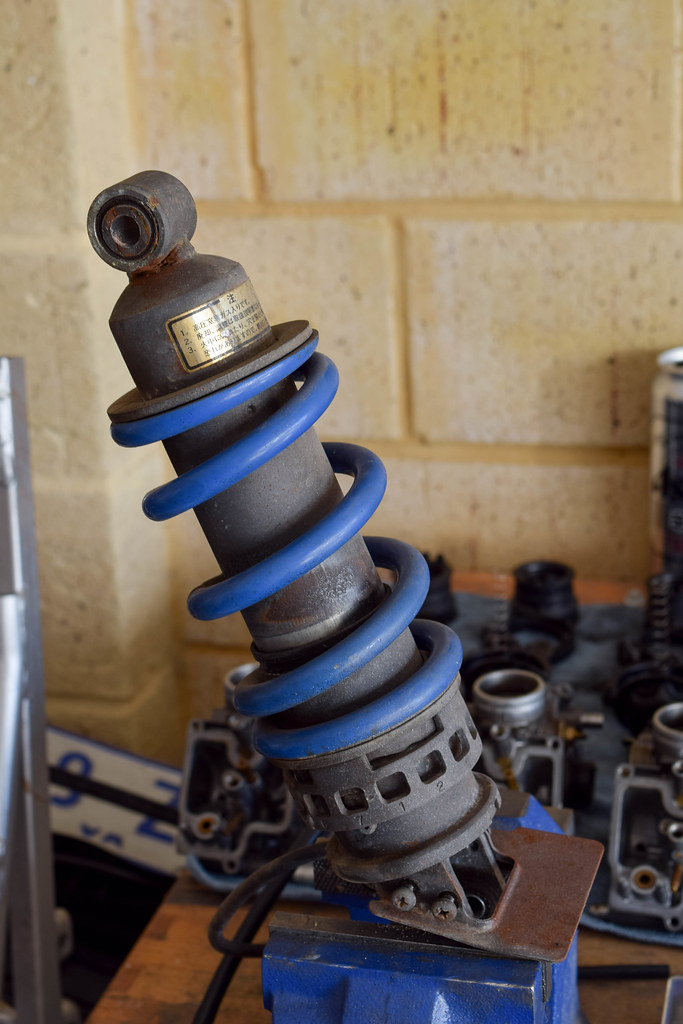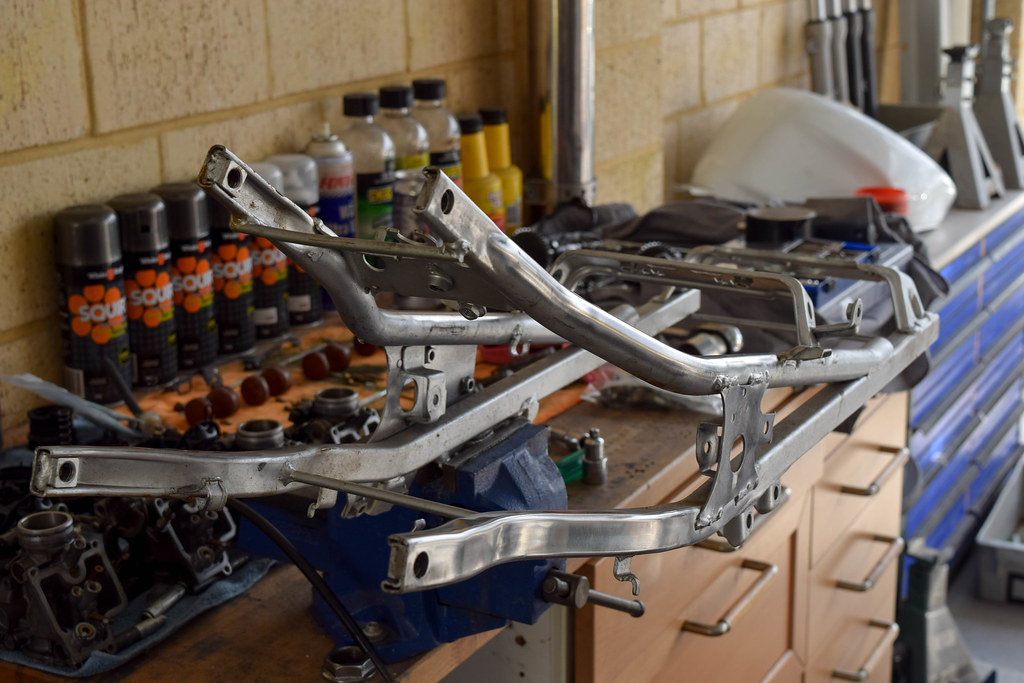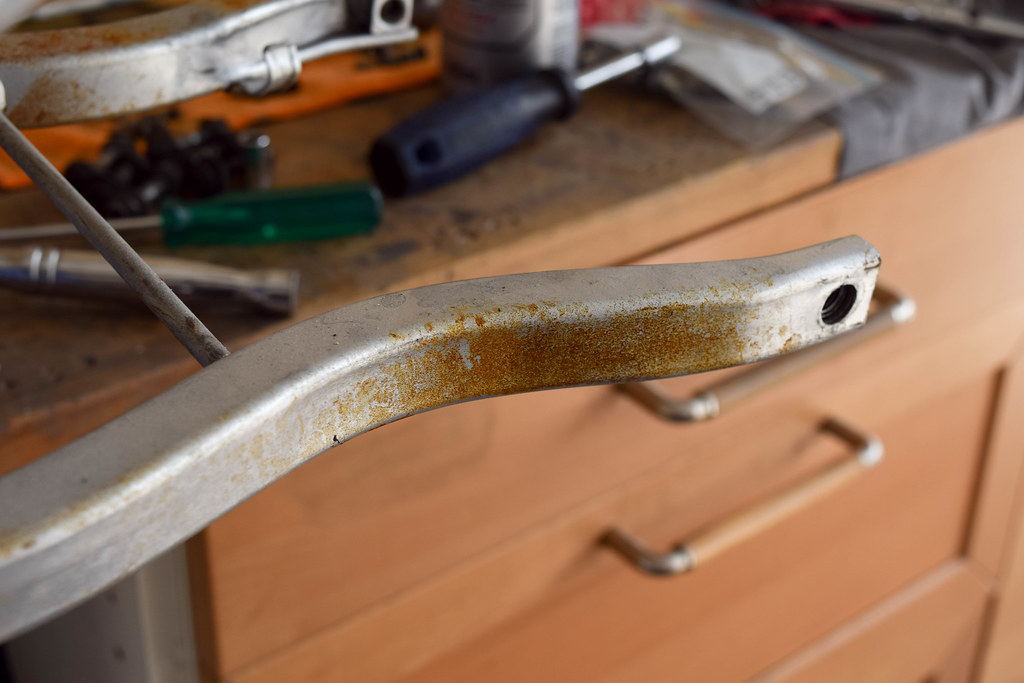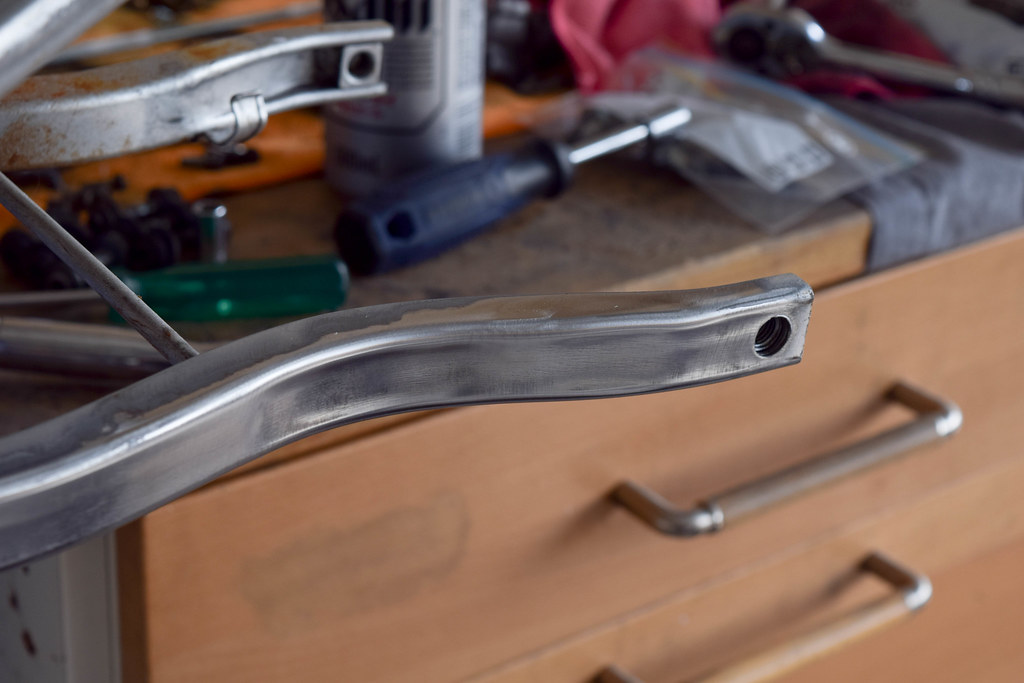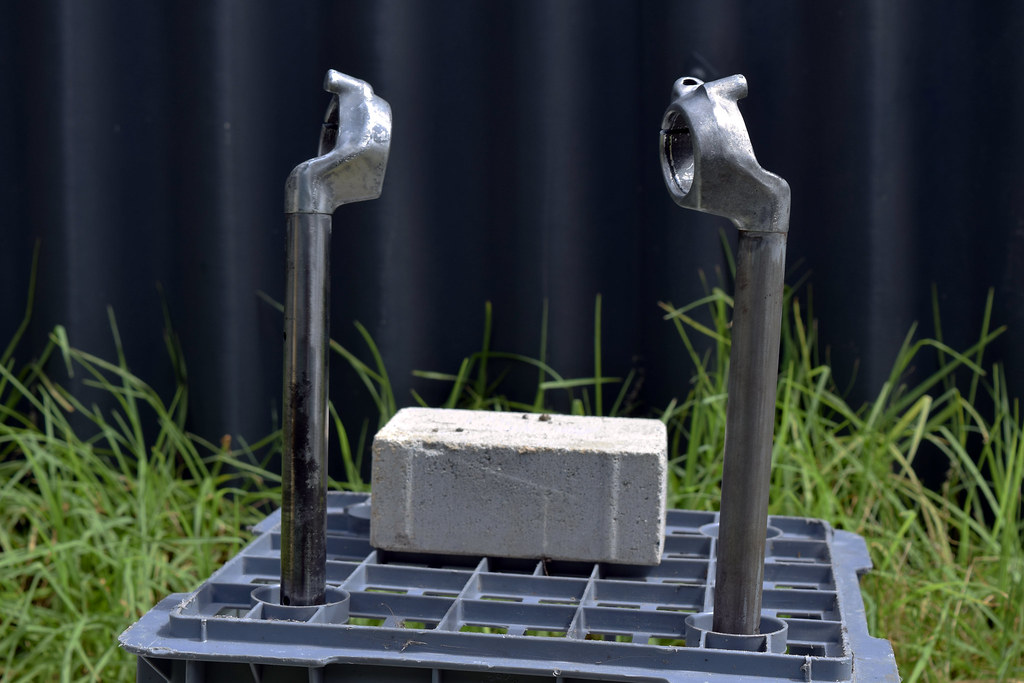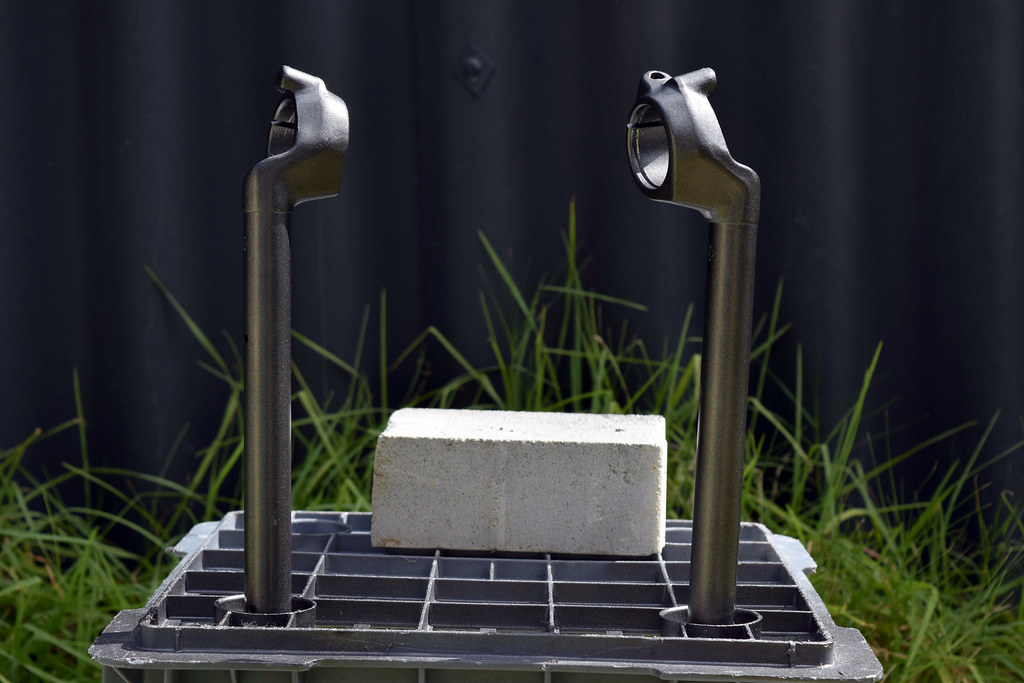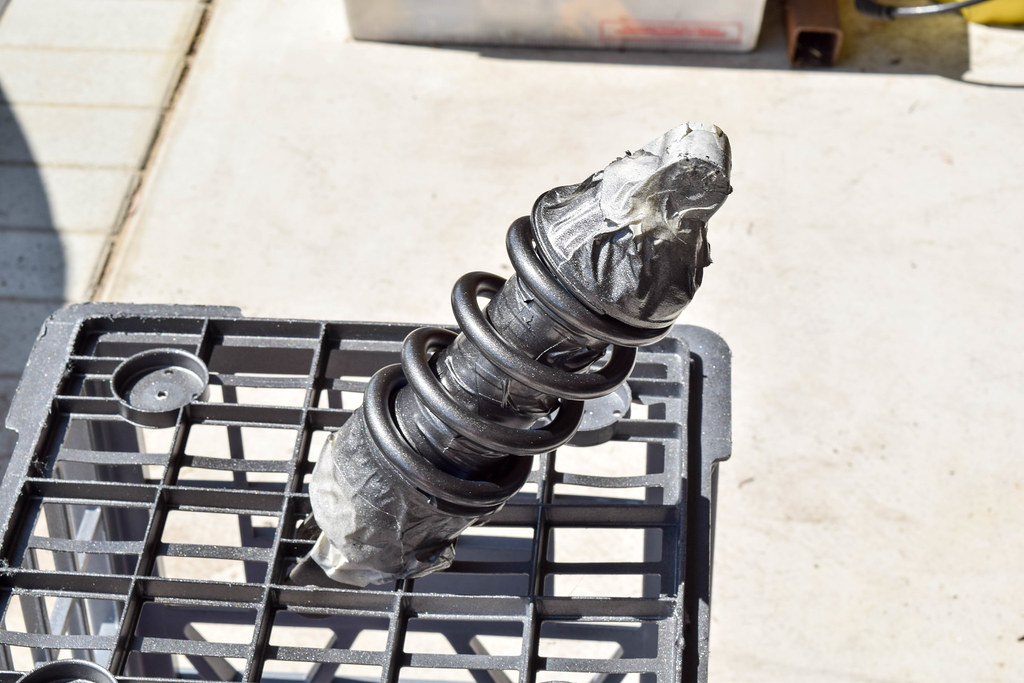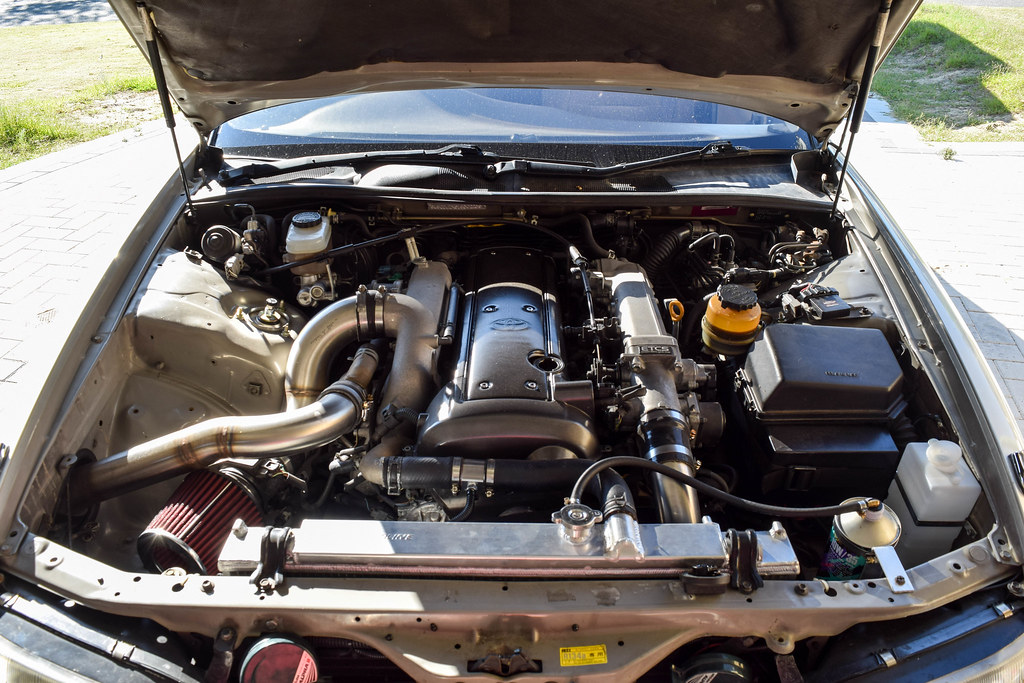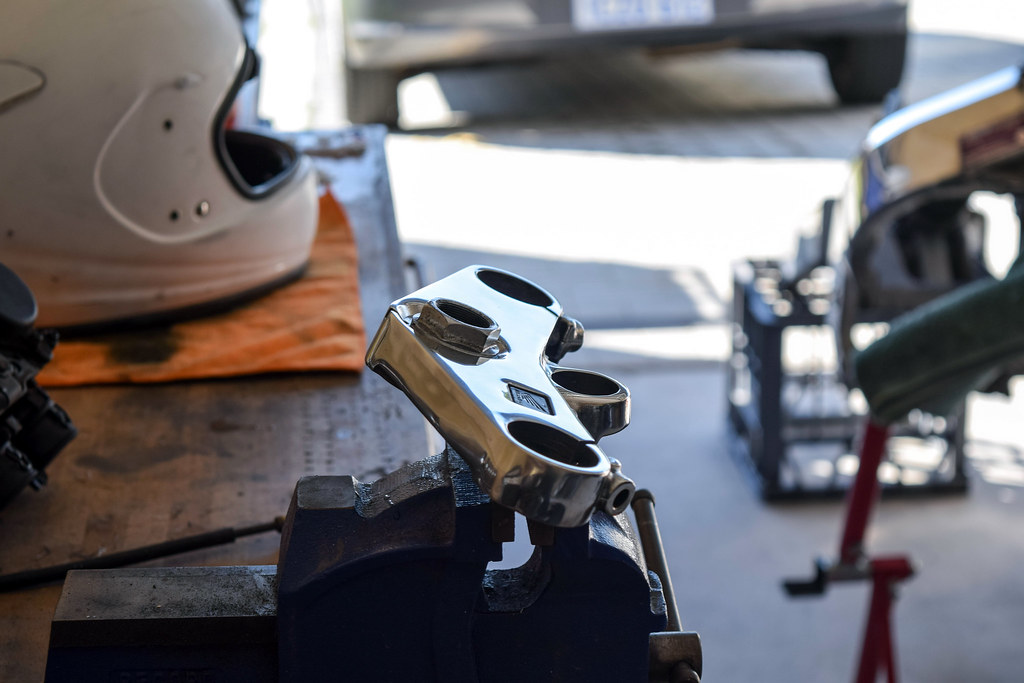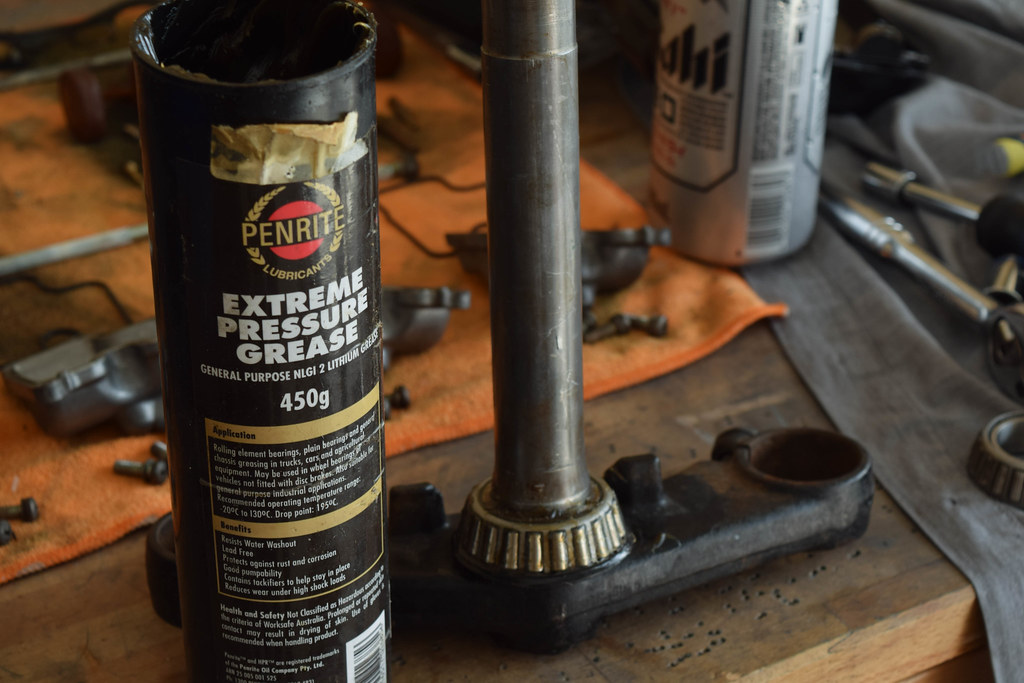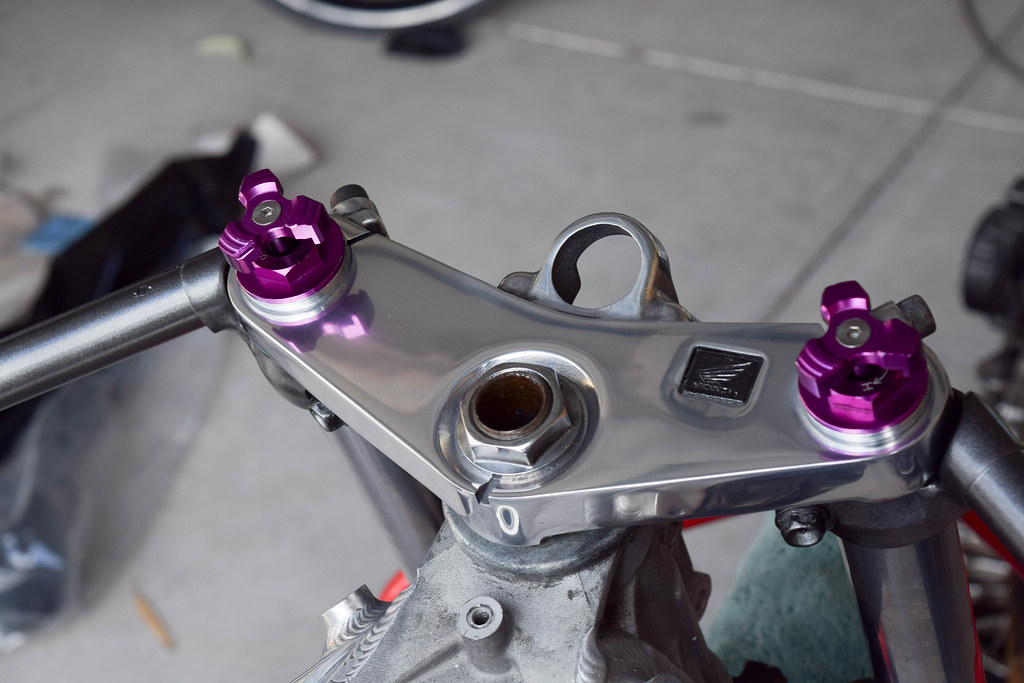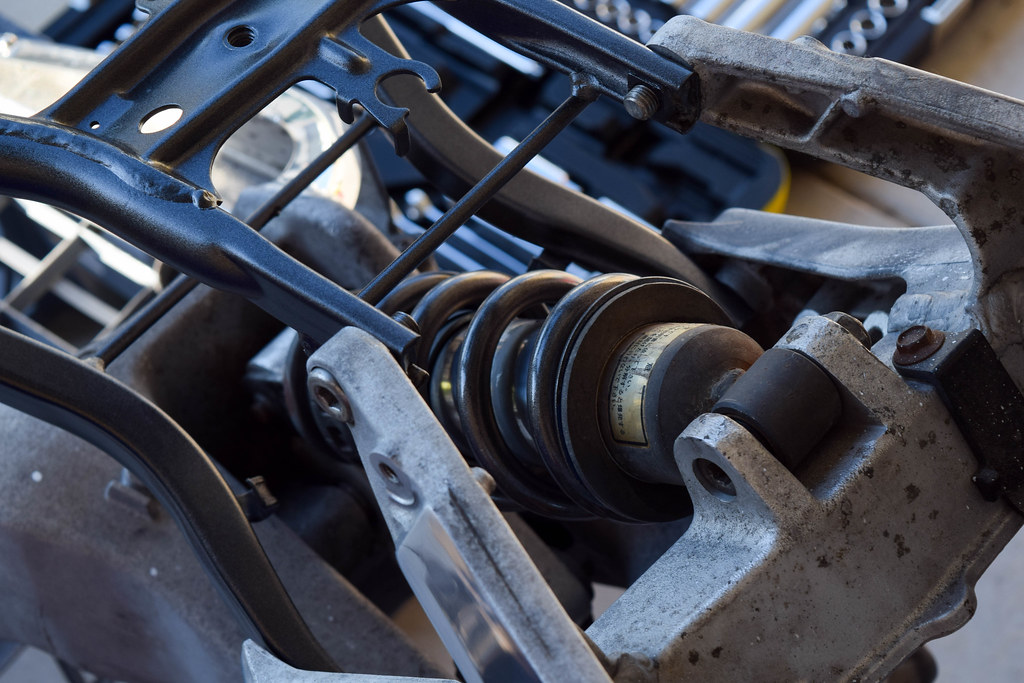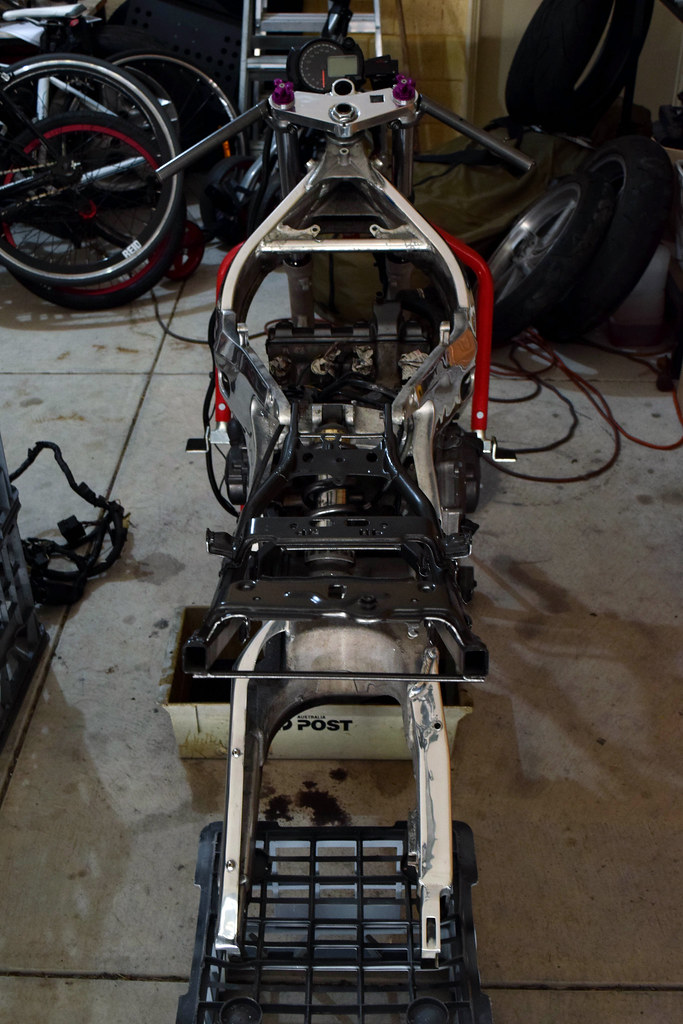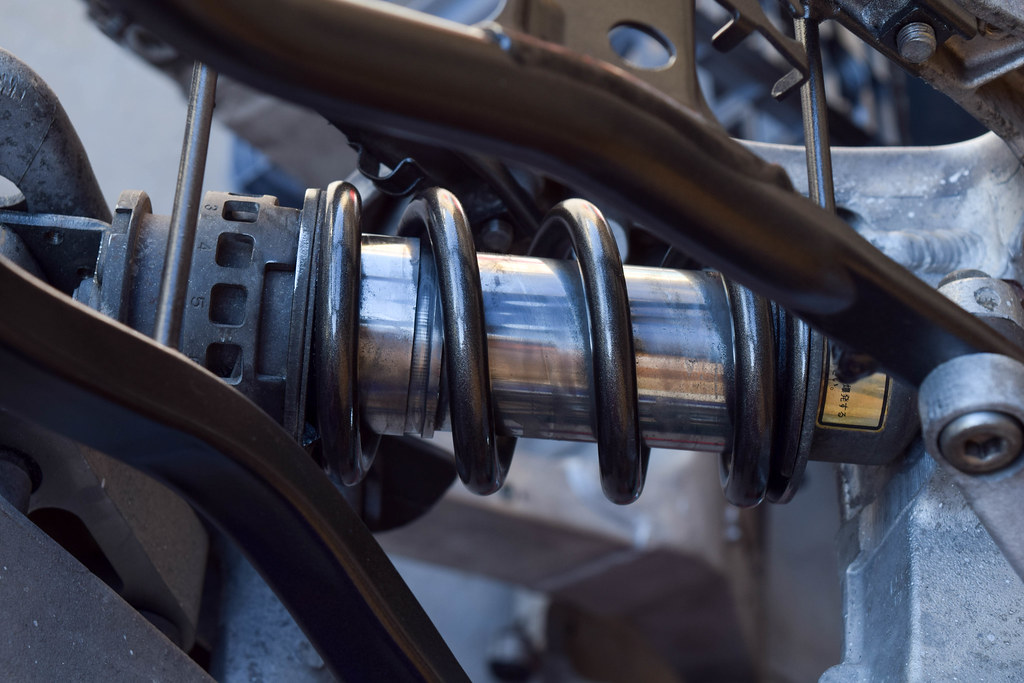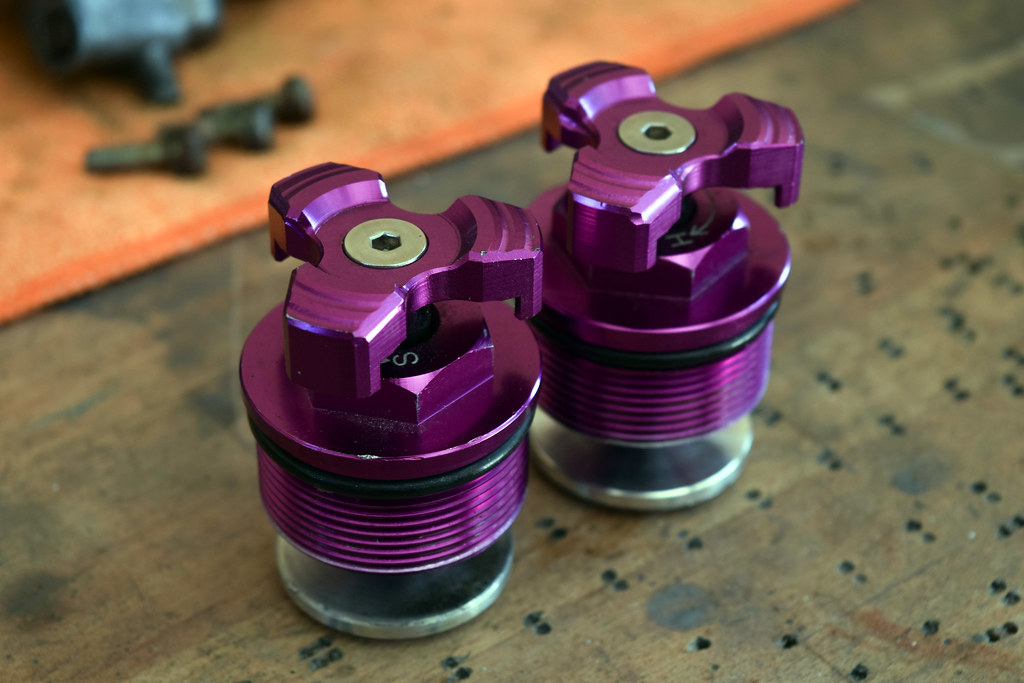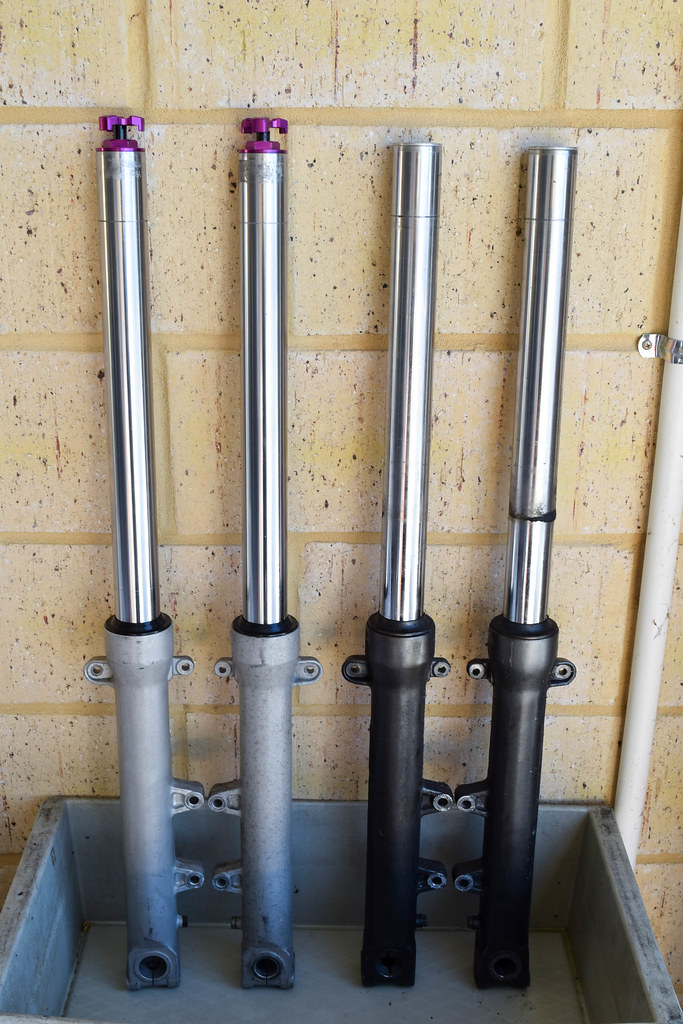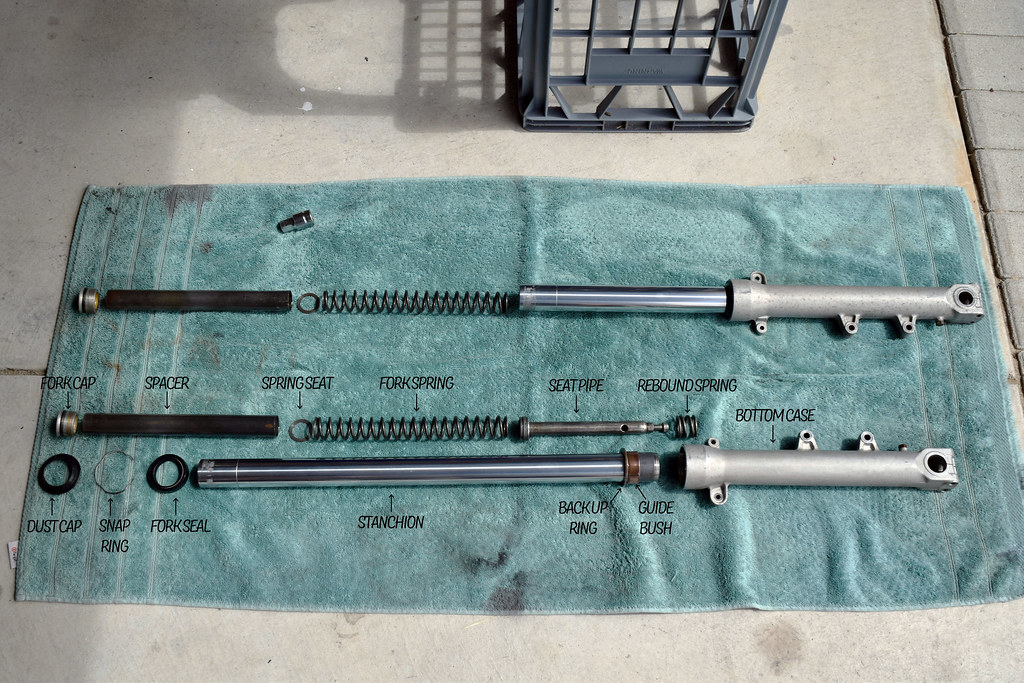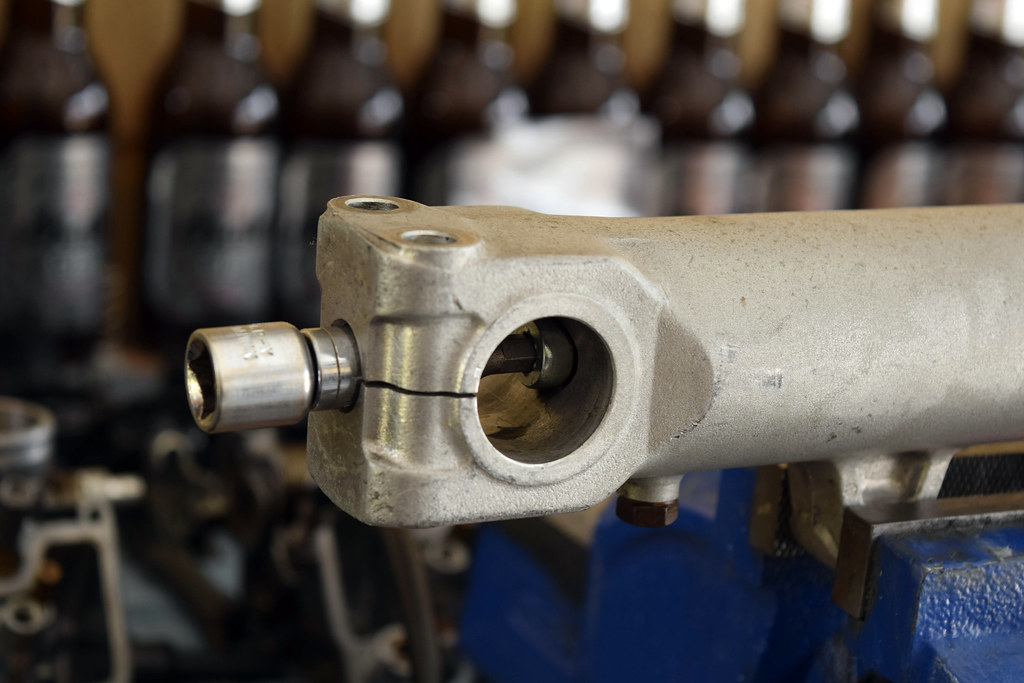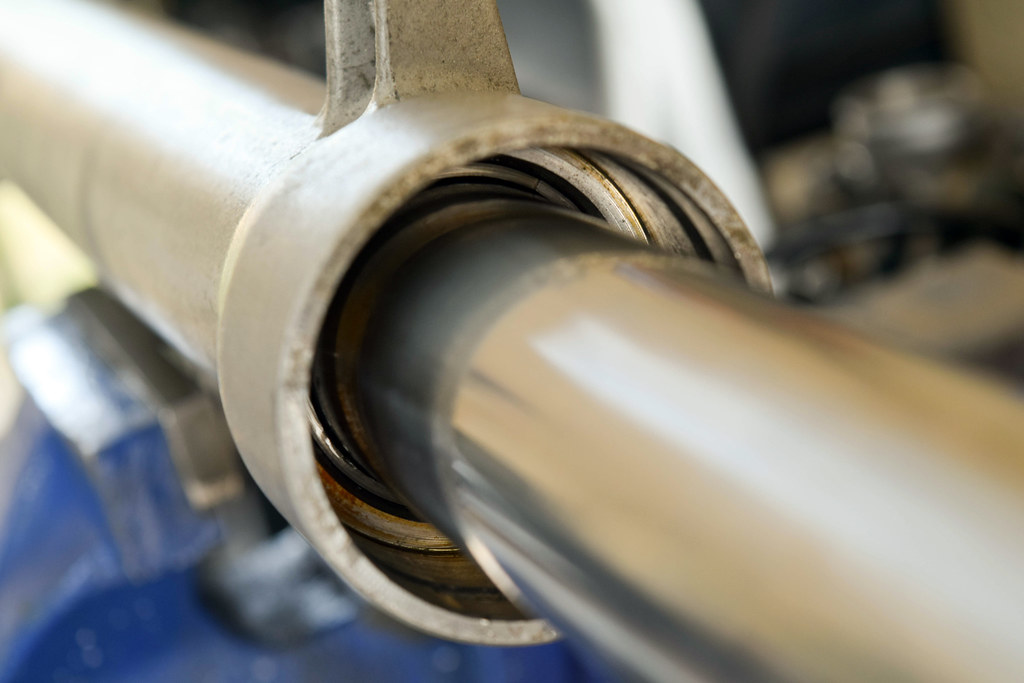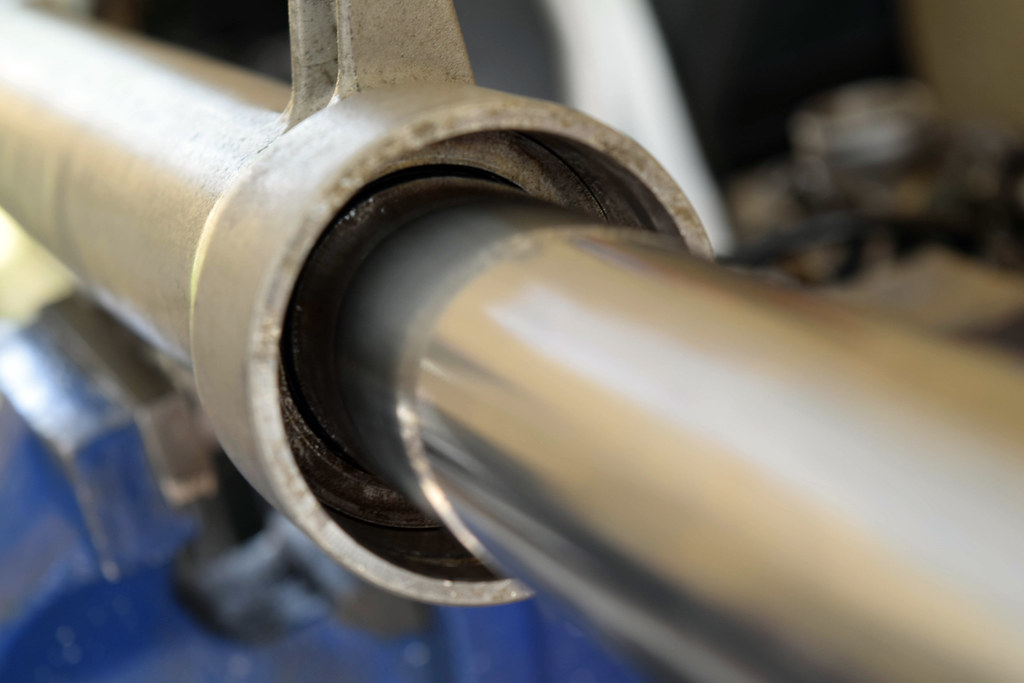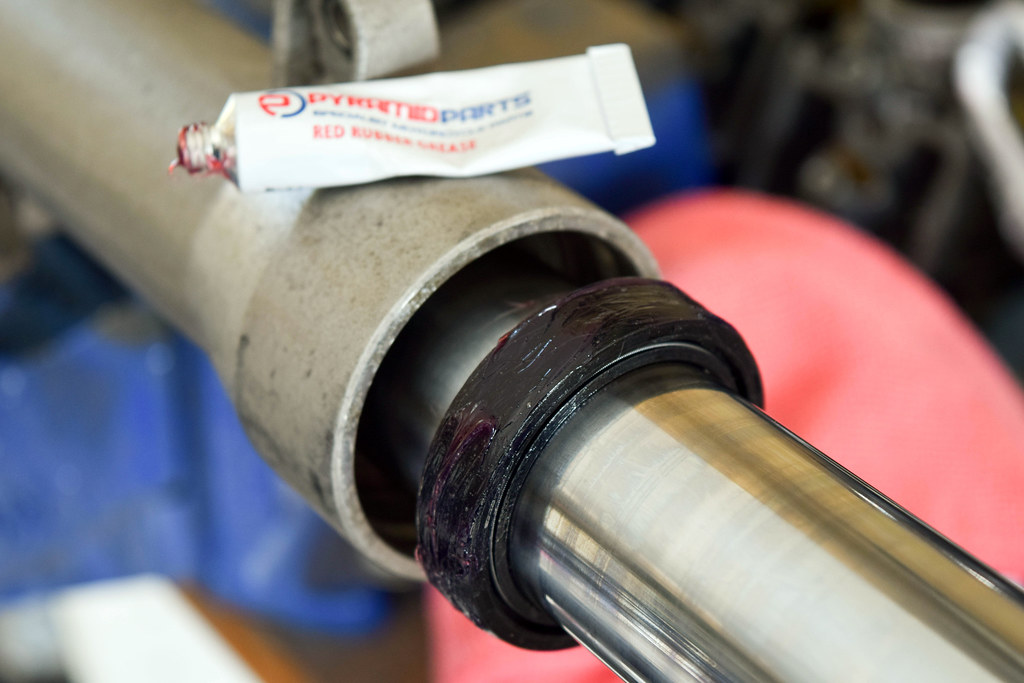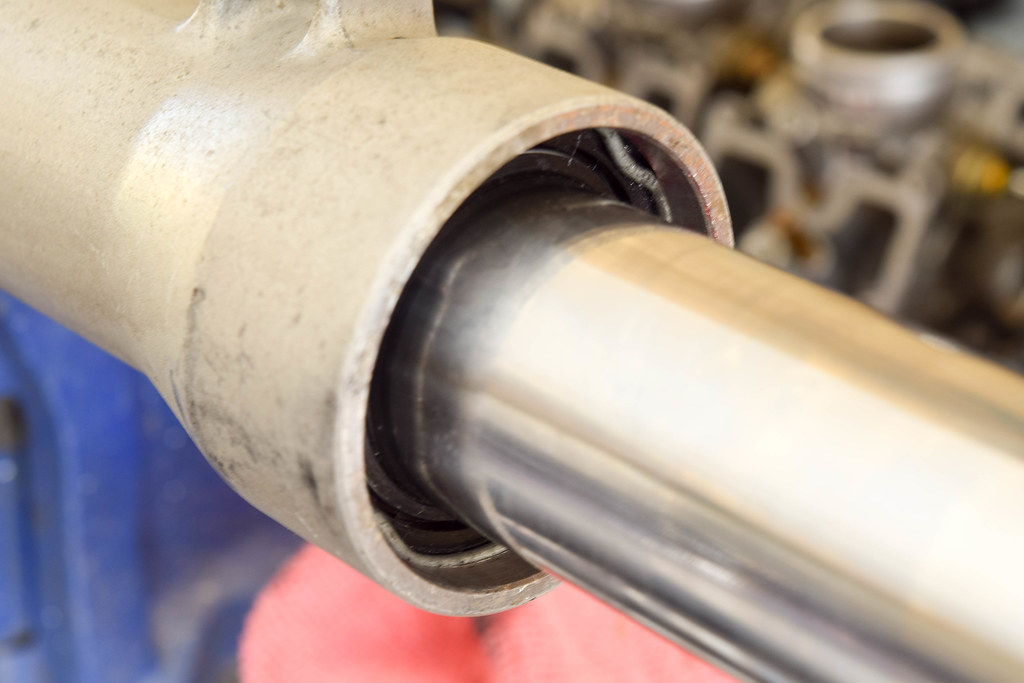A poly flap disc removed almost all the surface rust from the subframe and clip-ons, and returned the blue spring on the shock back to bare metal. To get to the pitting and dirt on the shock body I used a sisal buffing wheel which managed to clean the majority of the exposed area under the spring.
For paint I chose "Charcoal Metallic" by White Knight which will hopefully keep it lowkey and match with the final fairing colour. 4-5 coats of base put down and then coated in another 2-3 layers of clear.
Might as well be productive waiting for the coats to dry, oil and filter change for the JZX 🚗
While polishing the frame at some stage I took a break to polish up the top triple too. Once the clip-ons had dried the front end was all good to be reassembled, firstly regreasing the head stem bearings before moving onto bolting the top triple, clip-ons and forks in place.
Next was reinstalling the rear shock and bolting on the subframe.
